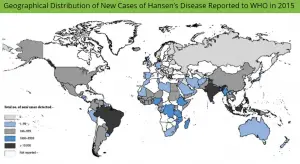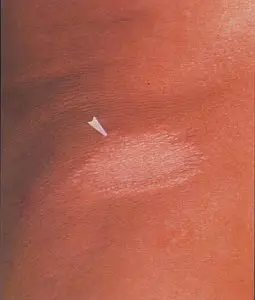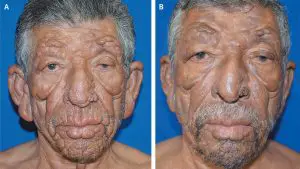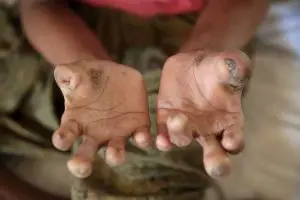Leprosy, also known as Hansen’s Disease, is an age-old disease. Once an incurable disease, patients had to be ostracized from their families and communities. However, medical advancement has brought cure, so much so that we rarely hear of people suffering from leprosy anymore. Despite that, recent statistics show that nine out of a hundred affected are children, which shows us we need to do more to prevent and treat leprosy. Thankfully, the World Health Organization (WHO) has a strategy: “Global Leprosy Strategy 2016–2020: Accelerating towards a leprosy-free world”, aiming to decrease disabilities and end disabilities in paediatric patients and discrimination worldwide.
What Is Leprosy?
Leprosy is caused by a bacteria known as Mycobacterium Leprae. It develops slowly over a period of time (at least 5 years or more) before showing signs of infection. The disease affects nerve endings which destroys the body’s ability to feel pain and touch. While some countries have been free from this disease, there are others that are still at greater risk with reported new cases, including:
- Africa: Democratic Republic of Congo, Ethiopia, Madagascar, Mozambique, Nigeria, United Republic of Tanzania
- Asia: Bangladesh, India, Indonesia, Myanmar, Nepal, Philippines, Sri Lanka
- Americas: Brazil

How Does It Spread & What Are Its Symptoms?
In ancient days, leprosy was thought to be a highly contagious disease that spreads between humans, causing patients to be separated from their local community. While it does spread between humans, it requires close contact with an untreated individual over a few months. The bacteria is spread through droplets from coughing or sneezing. The disease affects multiple systems, from the skin to the nervous system.
Skin Symptoms
- Large, discoloured lesion on the chest which looks like flat discoloured (lighter than the surrounding) patches of skin, with a sense of numbness
- Growths (nodules) on the skin
- Thick, stiff or dry skin
- Painless ulcers on the soles of feet
- Painless swelling or lumps on the face or earlobes
- Loss of eyebrows or eyelashes
Mucous Membrane Infection Signs
- Stuffy nose
- Nosebleeds
Nervous System Symptoms
- Numbness of affected areas of the skin
- Muscle weakness or paralysis (especially in the hands and feet)
- Enlarged nerves (especially those around the elbow and knee and in the sides of the neck)
- Eye problems that may lead to blindness (when facial nerves are affected)
- Loss of sensation and numbness poses a problem as injuries may occur without one noticing
Without the feeling of pain or touch, burns may go unnoticed until it is too late. Therefore, it is vital to be extra cautious to ensure the affected parts of your body are not injured.

Why Is The Disease Devastating?
Hansen’s disease brings about social discrimination and stigma that affects one’s psychological being, work and social life. Moreover, if the disease is left untreated, paralysis of hands and feet would occur. While treating can cure the disease, it cannot undo damaged nerves or deformity.
Other Symptoms of Untreated Leprosy
- Shortening of toes and fingers due to reabsorption
- Chronic non-healing ulcers on the bottoms of the feet
- Blindness
- Loss of eyebrows
- Nose disfigurement
Other complications that may sometimes occur are painful or tender nerves,redness and pain around the affected area and/or a burning sensation in the skin.

Why Is Recognising It Important?
“Early detection and treatment can help prevent disability.”
A biopsy of the skin or nerve ending is usually done if one has suggestive symptoms. Treatment then starts if the results come back positive for M. Leprae, consisting of multiple antibiotics (multidrug therapy (MDT)). It is used concurrently to prevent antibiotic resistance as treatment for a complete recovery takes a long period of time; about one to two years. The course of MDT differs depending on the type of leprosy, Paucibacillar and Multibacillar. It is also important for patients to inform their healthcare provider of all the signs and symptoms that they are facing in order for them to approach the disease comprehensively to prevent worsening.

Download the Doc2Us app from Google Play Store or Apple Store and chat with a doctor now.
This article has been edited for length and clarity. Article courtesy of Doc2Us; click here for full article.















